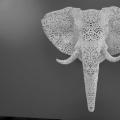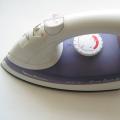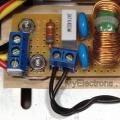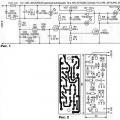I decided to relax and test devices without a single semiconductor. I ordered for review one cable of all sizes from those that were on sale in the store. Unexpectedly, but this event took me far away and dense forests ...
5 pieces of gray boxes arrived. Sent by Vietnam Post.
The parcel was tracked. Came unwrinkled.
11/21/2015 – order
11/26/2015 - sent
01/09/2016 - received
Only 44 days from the date of dispatch. Holidays, what to do ... 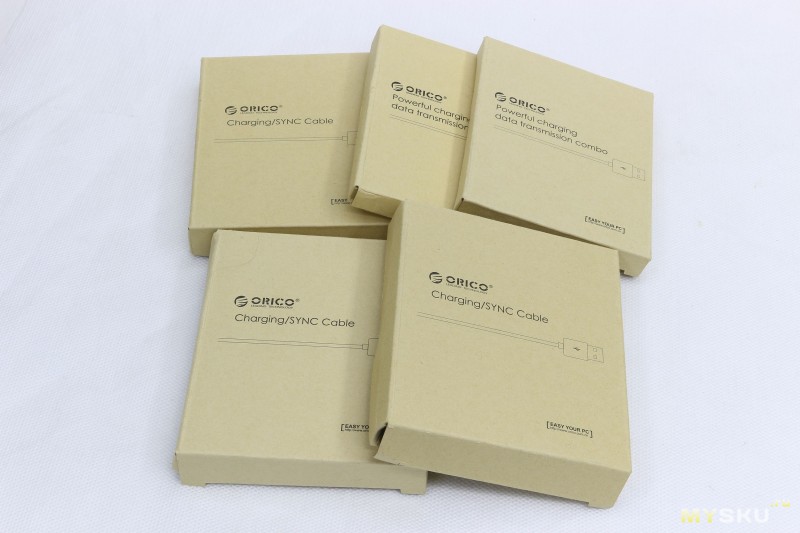
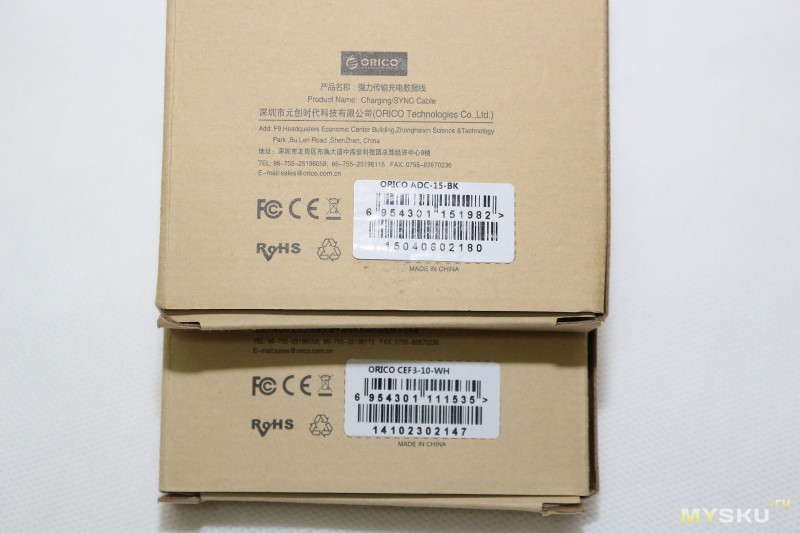
And I ordered:
ADC-08-BK - by 0.8 meters [hereinafter - 0.8_m ]
ADC-10-BK - 1.0 meter [hereinafter - 1.0_m ]
ADC-15-BK - 1.5 meters [hereinafter - 1.5_m ]
ADC-20-WH - 2.0 meters (white) [hereinafter - 2.0_m ]
CEF3-10-WH - 1.0 meter USB 3.0 white extension cable [hereinafter - 1.0_m_USB_3.0]
I have two ADC-10-BK 1.0 meter laces [hereinafter 1.0_m(old1) And 1.0_m (old2)], which I bought six months ago and actively use.
- LG cable 1.2 meters 4 mm thick got into the test [hereinafter - 1.2_m LG].
Cable quality:
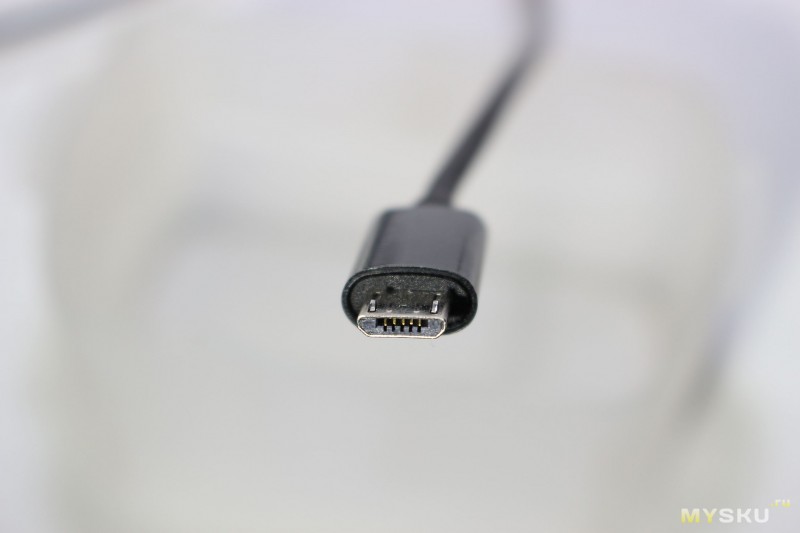

All ADC-** wires, regardless of length and color, have a thickness of 3 mm and approximately the same stiffness. They perfectly remember the shape and do not want to change it. The cable can only be completely straightened after the second or third attempt. The quality of the connectors is high, they do not dangle and hold well in the sockets. All connectors are glossy and have protective stickers on them.
- CEF3-10-WH - the cable is soft and pleasant to the touch. The connector and socket are made of high quality, inserted with effort.
- LG cable - very soft, 4 mm thick, does not remember the shape at all.
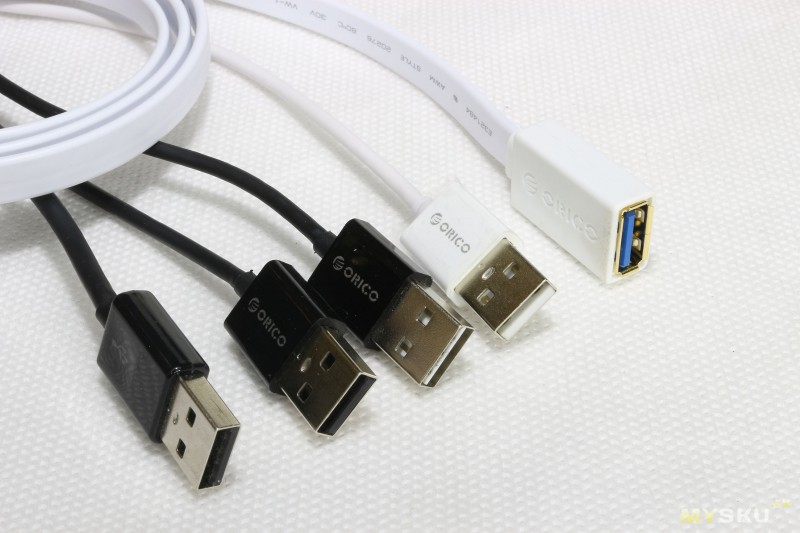
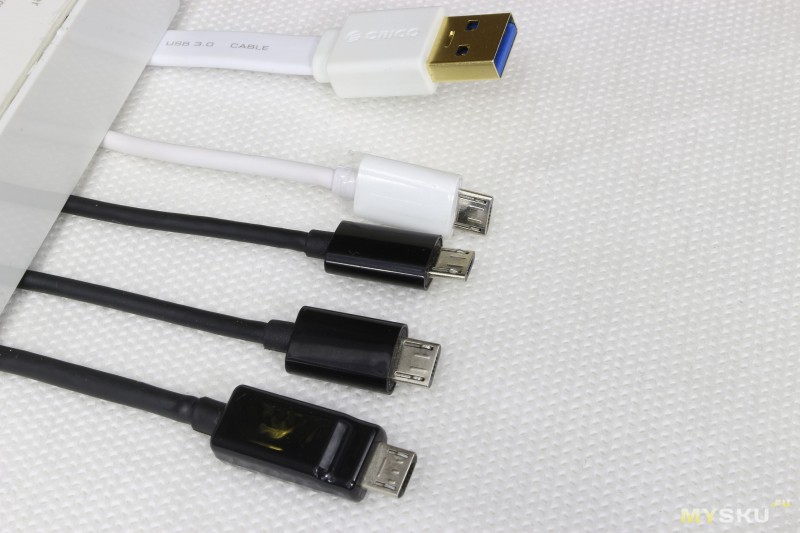
How to test pieces of wire?
First, I'll complain that testing wires is a thankless task.
Any wrong movement - and the resistance of the connectors changes. After all, electronics is the science of contacts. The result is affected by:
Charger response to increased load (voltage drop compensation)
- contact quality in USB (changes around 0.15v)
- contact quality in micro USB (changes around 0.15v)
- transients in the charger (can reach up to 0.2v)
- heating of the load resistor (changes about 0.05A)
- accuracy of measuring instruments
So I tested all subjects:
- on different chargers
- on different micro USB sockets
- load in CC mode
- several times to warm up the entire stand
I did not measure the effects of the USB chargers themselves, as this will decently increase the amount of data.
The test bench looks like this:
I took care of the USB sockets in advance (bought later, but arrived earlier).
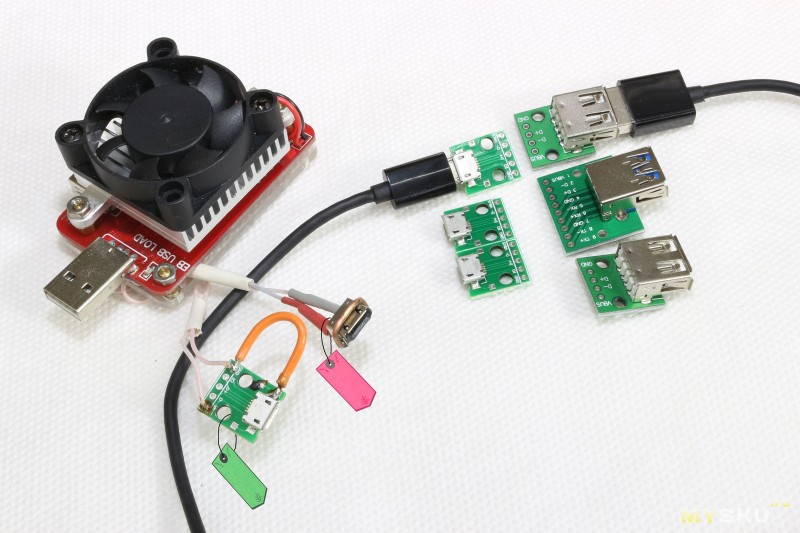
The photo shows an EBD-USB tester from ZKEtech. I soldered two micro USB sockets to it. One of them (more red\red) I took from a USB-HDD WD hard drive. The second nest (more green\green) I took from the purchased set. Both nests are held on a flexible wire brand MGTF. By doing this, I ensured that the sockets "follow" the cables without additional mechanical stress on the sockets.
fabrications
First of all, I wanted to know what is happening with the hull and the ground? First I check that both contacts are electrically connected.
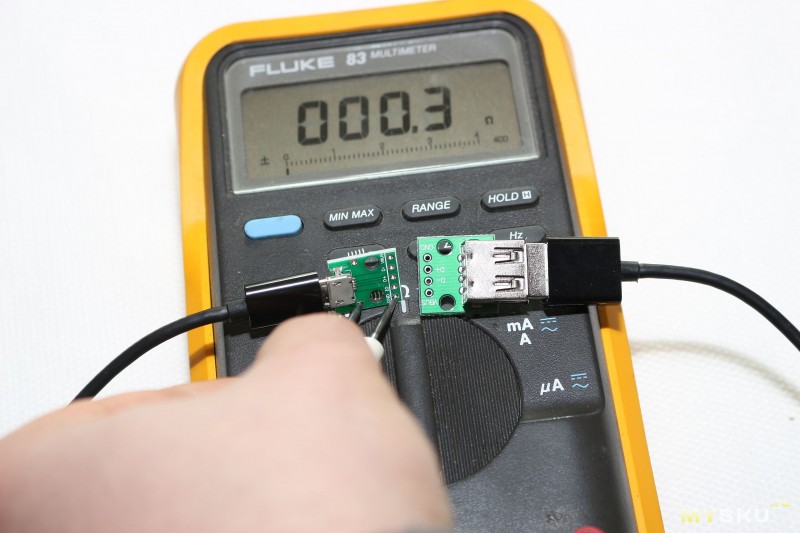
Since the ground is electrically connected to the case, then I assume three connection options.
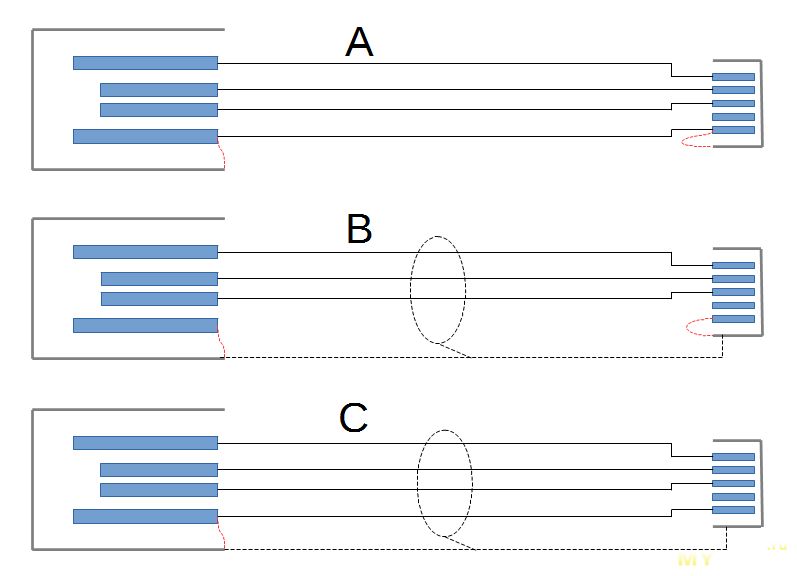
Cut and see - for the weak in spirit! I'm going to experiment further.
I increase the current to 2.5A and measure the voltage drop on red and green micro USB.
After all, these nests are special to me. In red, the earth is initially connected to the body (me). While on green - the ground and the hull are separated. Measurement results in the graph:
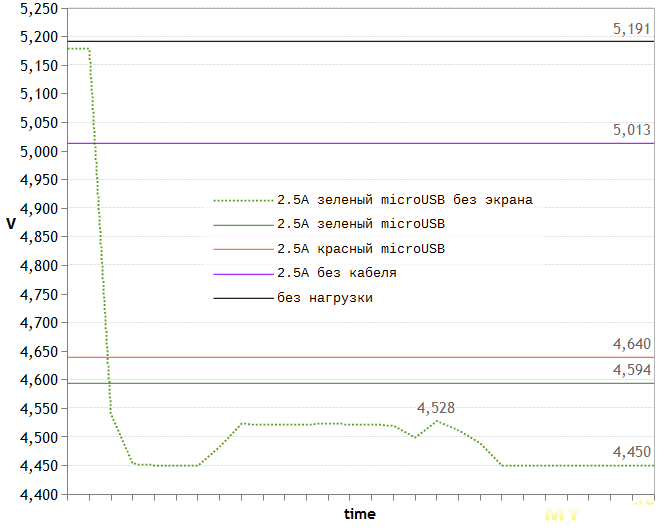
During testing, I closed the “ground” of the green micro USB with the case with tweezers. It turned out such bursts of voltage (dotted line).
In the same table, there is a green micro USB already connected to the "ground" with the body using an orange piece of cable (this modification can be seen in the photo of the test bench).
Subtotals:
- shorting the ground to the case reduces the drop by - 0.144V
- red micro USB socket is better than green
- connection type "C" is more suitable for measurements, so the changes can be explained as adding another conductor to the circuit.
It is a pity that I do not have more accurate equipment for replenishing statistics.
... so I cut the cable.
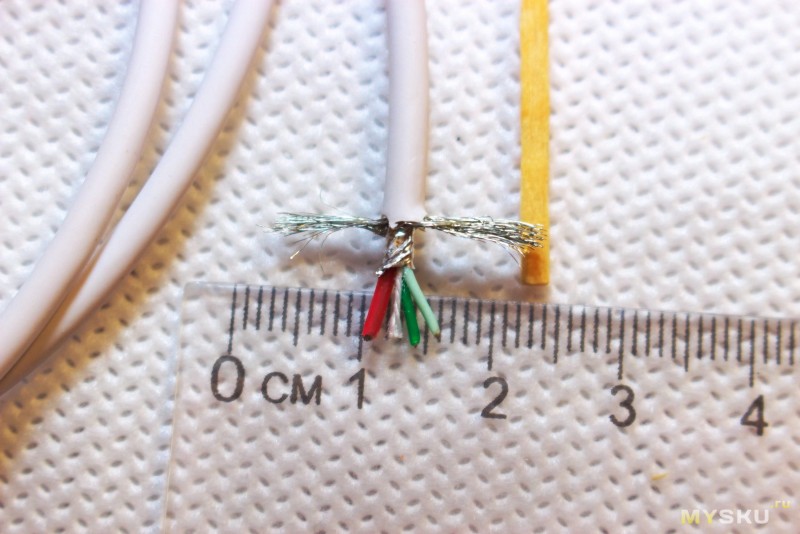
Total:
- I did not guess the type of connection - "B"
- 2-layer foil explains the stiffness of the cable
- the role of the "ground" is performed by a shielding braid evenly distributed over the foil
- positive wire of decent thickness
- there is a synthetic thread to prevent the wire from stretching over time
Preliminary tests have been carried out let's start measuring.
Tools:
- USB tester
- charger (more white)
- charger (more black)
I once again tested the chargers with a load up to 2.5A and show the results in the graphs. In which you can see that the white charger increases the voltage with increasing load. Cheating, but perfectly legal.
Test stand and measurements
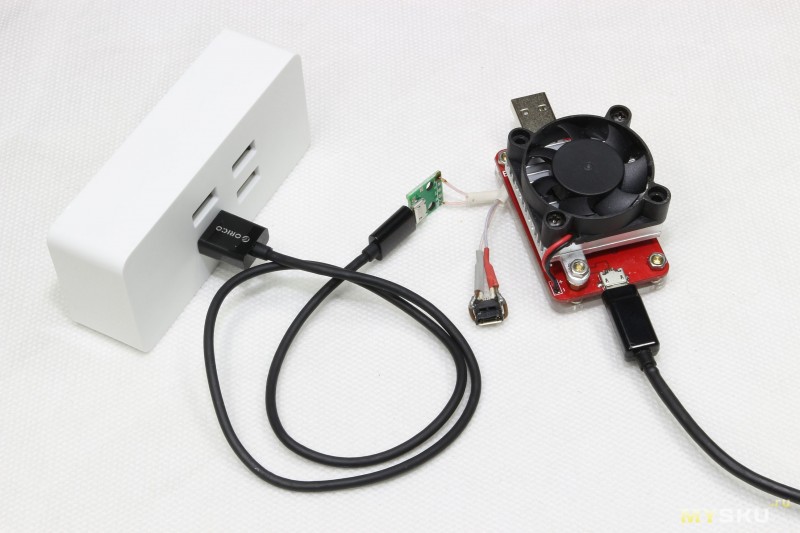
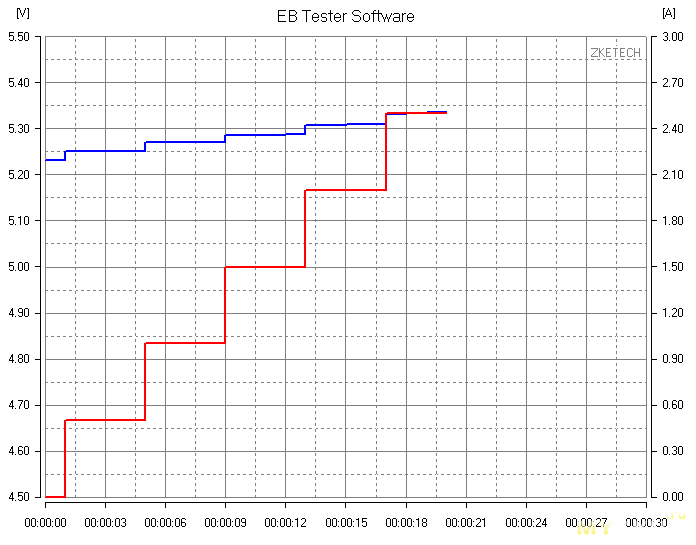
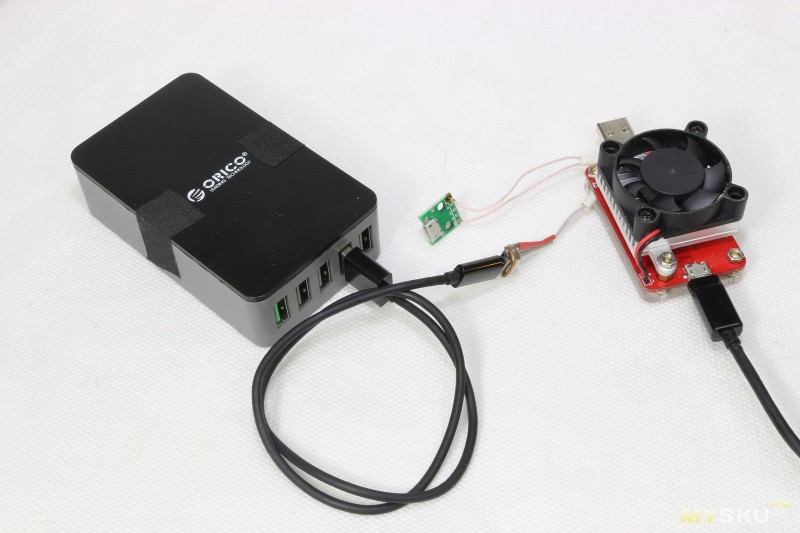
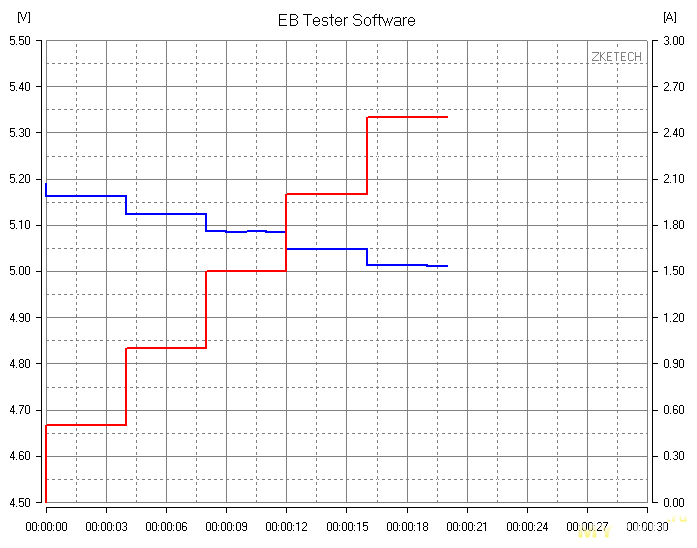
Testing steps:
- measurement of 9 subjects via red and green micro USB from white charger
- measurement of 9 subjects via red and green micro USB from black charger
The wires were energized with a current of 0 \ 0.5 \ 1.0 \ 1.5 \ 2.0 \ 2.5 amperes.
The measurement board turned out to be decent. So don't judge. 
I thought for a long time how to systematize this data and bring it to a digestible form.
showing how one single cable behaves on different chargers, different micro USB sockets and under different loads.

Thin solid lines - the work of the black charger.
The thin dotted line in green is the voltage drop at the connector without a shield.
Thick dotted line - white charger.
Black lines - voltage drop without cable.

These are the results of measuring one single cable. But in different situations, the result is slightly different.
Best cable performance at 2.5A with black charger - 0.373V drop
Worst cable performance at 2.5A with black charger - 0.553V drop
Best cable performance at 2.5A with white charger - 0.341V drop
Worst cable performance at 2.5A with white charger - 0.407V drop
Summary: the spread of drops on one cable at a load of 2.5A reaches 0.212V. What can be said? Yes, it's a good cable.
Work of seven cables with black and white chargers.
In this section, I took the data from the general table. But threw out:
- cable 1.0_m(old1)
- cable 1.0_m (old2)
- measurements with green micro USB(as the worst)
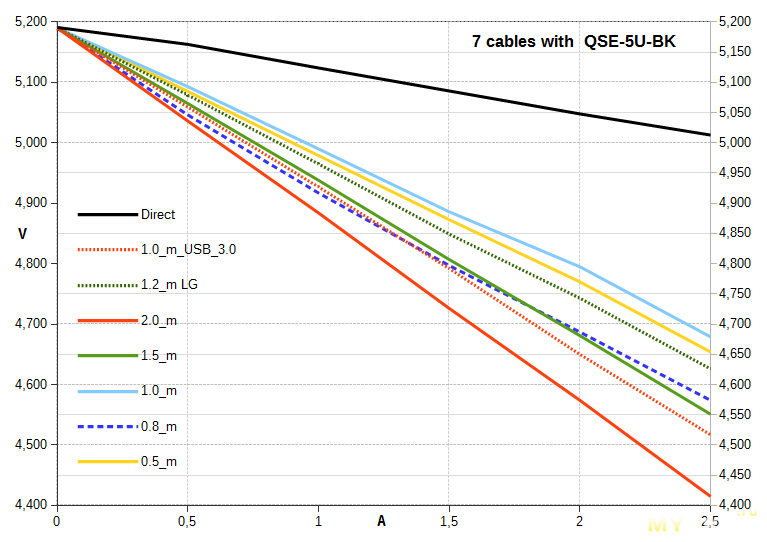
General table for both graphs: 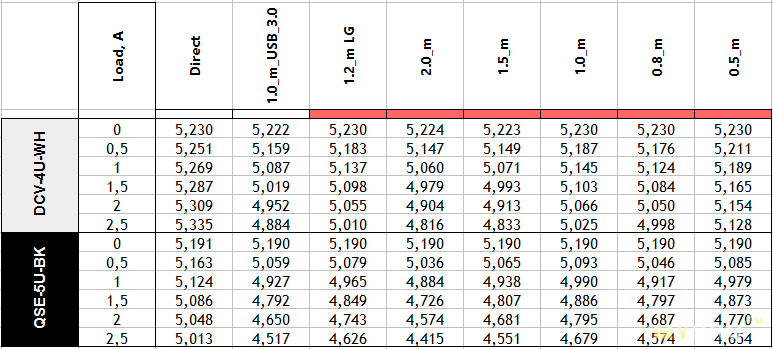
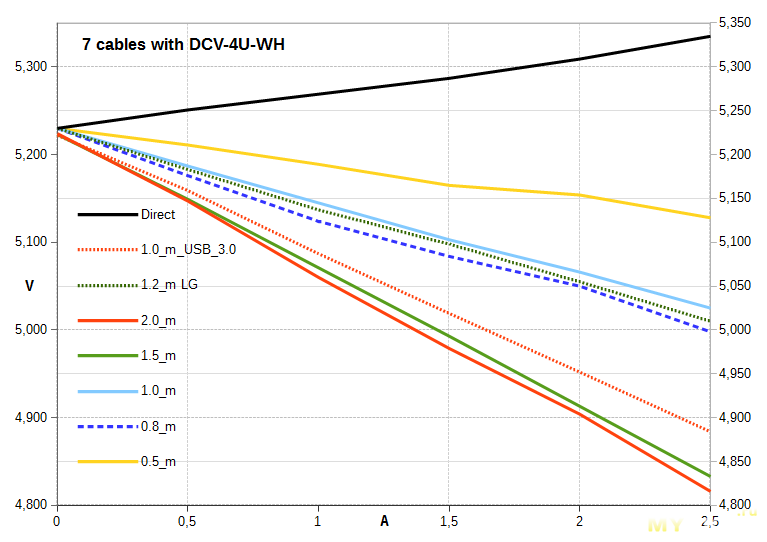
Summary, conclusions, results and opinion:
* ADC-05-BK (?) - showed the best result, which is logical.
* ADC-08-BK - does not differ from the meter, and sometimes worse (by as much! 0.027v).
* ADC-10-BK - all three cables did not fall face down in the mud.
* ADC-15-BK - not bad, not bad.
* ADC-20-WH is naturally the worst among its counterparts, but at 2A the output voltage is very working.
* CEF3-10-WH - I can not compare with my brothers, but in comparison with USB 2.0 - the performance is not bad.
* LG cable at 1.2m - I don't know if it's a “yes buy a cable from LG” or not, but it breathes down the back of the head of meter cables from Orico.
P.S. if the review did not seem boring enough to you, then you simply bypassed the spoilers.
The product was provided for writing a review by the store. The review is published in accordance with clause 18 of the Site Rules.

